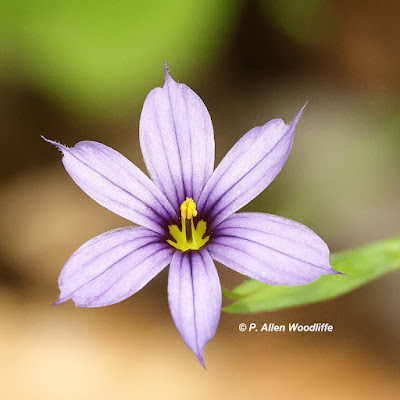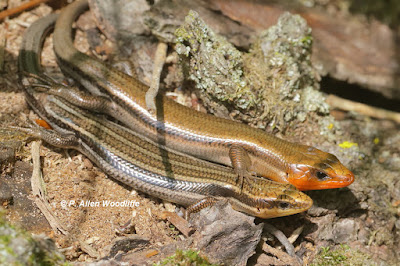First of all, I need to apologize for not responding to the many comments readers have shared with me over the past few months. I used to get immediate notifications when a comment was made, but something changed, and so comments that were made since the beginning of 2025 seemed to be tucked away in a different manner, and I only came across them today. I have tried to respond to all of those that were made since then!
June is the prime month for Tulip Trees to show off their impressive flowers.
The Tulip Tree Trail is one of my favourite trails at Rondeau for various reasons that I might explain in my other post. At any rate, there are lots of Tulip Trees, but unfortunately for the normal hiker, the flowers are hard to see as the flowers like lots of sunlight so are most abundant near the uppermost parts of the tree. A telephoto lens was necessary to get this next photo.
At ground level, fortunately, there are lots to see at this stage of the season. It is always nice to lock eyes on a butterfly!
 |
| Northern Crescent |
Another critter came into view: it is a Morbid Owlet, a moth, which was not very active and preferred the shadier parts along the trail. Not sure who comes up with these names, as I don't see anything morbid about it.Butterflies are fairly active especially on sunnier days. If it doesn't get too hot, I expect they will really like the next few days as it becomes the warmest of the year so far!
 |
| Little Wood-satyr |
Purple-flowered Raspberry is starting to be more noticeable at the woodlot edges, as the deep red flower appear. Although it is a member of the raspberry family, the fruits are not edible.
And in a few places, one might encounter the Endangered, Red Mulberry. There are a few places scattered around Rondeau where this species can be found, and it is in flower right now.In some of the wetter areas, one will come across this next wildflower, Tufted Loosestrife.
Also along trail edges, but not a native species, is Common Mouse-ear Chickweed, named because the 5 petals are partially split, looking like a pair of ears.
And then another moth comes into view. It is known as a Black-bit Moth.An even smaller creature resting on a leaf was this Basal Click Beetle, barely a centimetre in total length.
Not a flower in the normal sense of what one might expect, is this next one: American Cancer-root, formerly known as Squawroot. It is parasitic on the roots of various trees, mainly oaks and beech trees, although this particular one was part of a clump at the base of a White Pine. But since the roots of trees intermingle underground, it could easily have been connected to an oak, which was nearby. It doesn't have leaves and flowers like most flowering plants, and what is seen above ground is really just the flowering/fruiting body.
One can come across Ontario's only lizard at Rondeau, the Common Five-line Skink. I know I have featured them in recent posts, but I thought this one was worth showing. I refer to these particular ones as 'Love Skinks'. The male has the orange facial area. I have never seen a pair of them this close, and with the male having his right front arm over the back of the female!
While we were watching this pair, we had what we determined was likely a Short-tailed Weasel pop up on the boardwalk less than two metres of my feet, grab something and disappear. I suspect that as we had slowly walked along the boardwalk approaching this spot, the weasel dropped what it had in its mouth, and scampered away, but was reluctant to give up its meal and so returned. It all happened so fast I was unable to get a photo of the weasel. I didn't get a solid look at what it came back for, but the person I was with said it looked like a small skink, perhaps part of the extended family of the pair we were watching. I had seen young skinks in this immediate vicinity on previous visits, so it was entirely likely. Certainly an interesting time watching nature in action, much to the chagrin of the little skink.
Visitors to Rondeau earlier this season likely would have noticed where the park's prescribed burn efforts were this year. Several areas looked like this:
In only a short period of time, the grasses responded well, and even now, several weeks later, the growth has been quite lush, as expected. The burn keeps the numerous shrubs, some of which are not native and aggressive, in check, so that the native grasses and wildflowers continue to represent an important part of the park's vegetation mix.I was going to feature some more early season orchids, but that may be in the next blog. And check out my new-themed blog, Life Is A Journey, at this link. I plan to post my next one on this blog very soon.
If you would like to subscribe, or unsubscribe, to Nature Nuggets, send an email to: prairietramper@gmail.com




















No comments:
Post a Comment